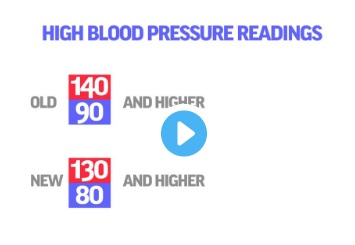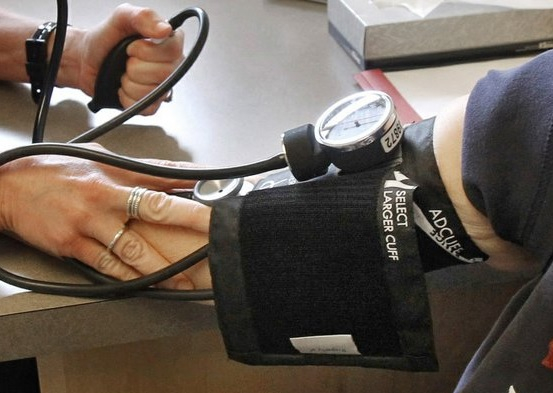
ANAHEIM, California: New guidelines lower the threshold for high blood pressure, adding millions more people to those who have the condition.
High pressure, which for decades has been a top reading of at least 140 or a bottom one of 90, drops to 130 over 80 in advice announced Monday by a dozen medical groups.
High blood pressure is a leading cause of stroke.
Poor diets, lack of exercise and other bad habits cause 90 percent of high blood pressure.
Hypertension, also known as high blood pressure, is a long-term medical condition in which the blood pressure in the arteries is persistently elevated.
Long-term high blood pressure, however, is a major risk factor for coronary artery disease, stroke, heart failure, peripheral vascular disease, vision loss and chronic kidney disease.
What's alarming experts is that today, a large number of young people have been diagnosed with hypertension even under the old guidelines.
High blood pressure now affects nearly half of US adults under new health guidelines. Story: https://t.co/1sYdwRJQAi pic.twitter.com/eKBhlUQp6C
— AP Health & Science (@APHealthScience) November 14, 2017
“I have no doubt there will be controversy. I’m sure there will be people saying ‘We have a hard enough time getting to 140,’” said Dr. Paul Whelton, a Tulane University physician who led the guidelines panel.
But the risk for heart disease, stroke and other problems drops as blood pressure improves, and the new advice “is more honest” about how many people have a problem, he said.
In the US alone, 30 million more Americans will be added to those who have the condition, which means high blood pressure now plagues nearly half of US adults.
The change means an additional 14 percent of US adults have the problem, but only an additional 2 percent will need medication right away; the rest should try healthier lifestyles, which get much stronger emphasis in the new advice.
Currently, only half of Americans with high blood pressure have it under control.
The upper threshold for high blood pressure has been 140 since 1993, but a major study two years ago found heart risks were much lower in people who aimed for 120. Canada and Australia lowered their cutoff to that; Europe is still at 140 but is due to revise its guidance next year.
The guidelines were announced Monday at an American Heart Association conference in Anaheim.
What the changes mean
The guidelines set new categories and get rid of “prehypertension”:
— Normal: Under 120 over 80
— Elevated: Top number 120-129 and bottom less than 80
— Stage 1: Top of 130-139 or bottom of 80-89
— Stage 2: Top at least 140 or bottom at least 90
How common the condition is will roughly triple in men under 45, to 30 percent, and double in women of that age, to 19 percent.
For people over 65, the guidelines undo a controversial tweak made three years ago to relax standards and not start medicines unless the top number was over 150.
Now, everyone that old should be treated if the top number is over 130 unless they’re too frail or have conditions that make it unwise.
In the US, this means 46 percent of US adults have high pressure (stages 1 or 2) versus 32 percent under the old levels.











